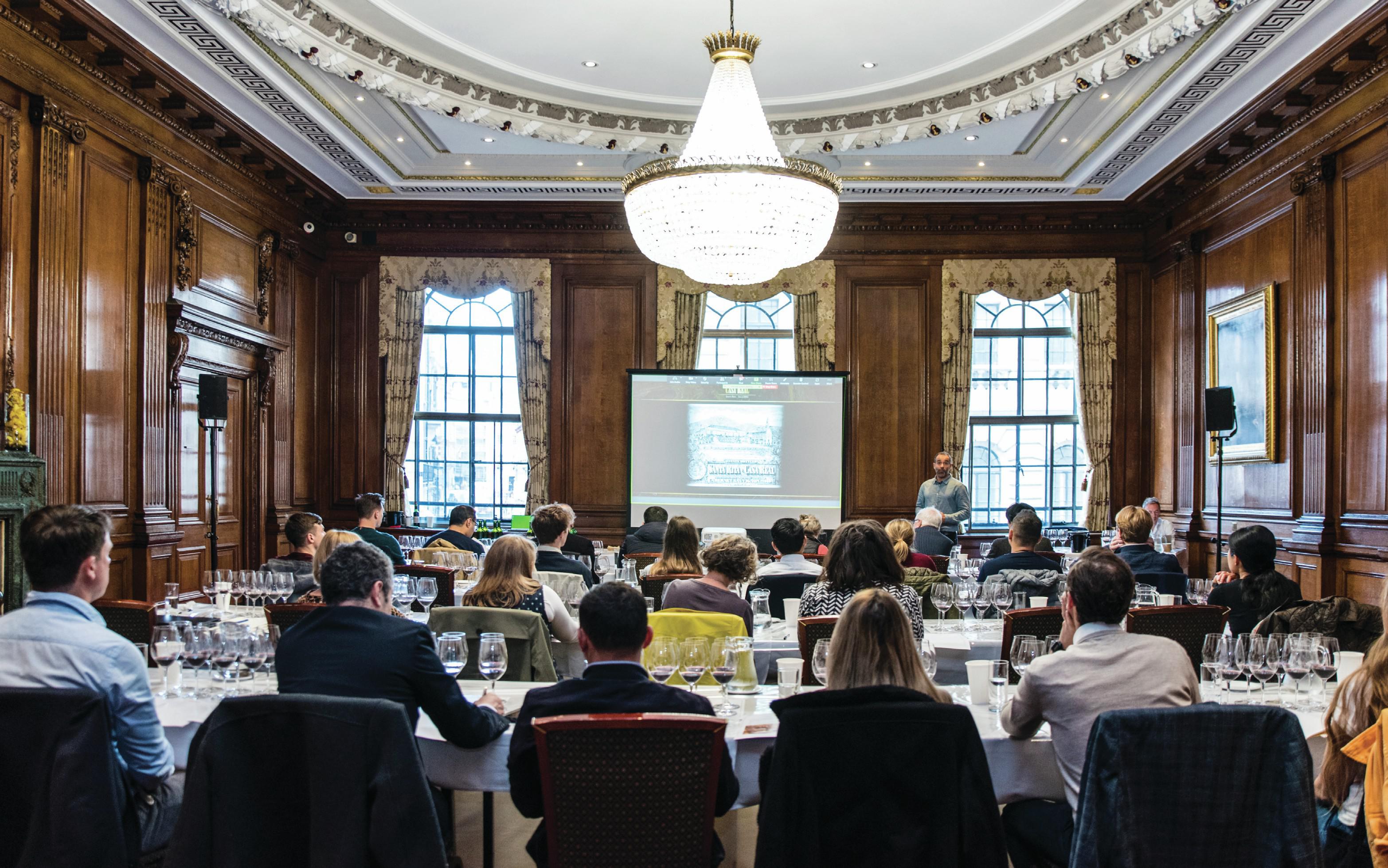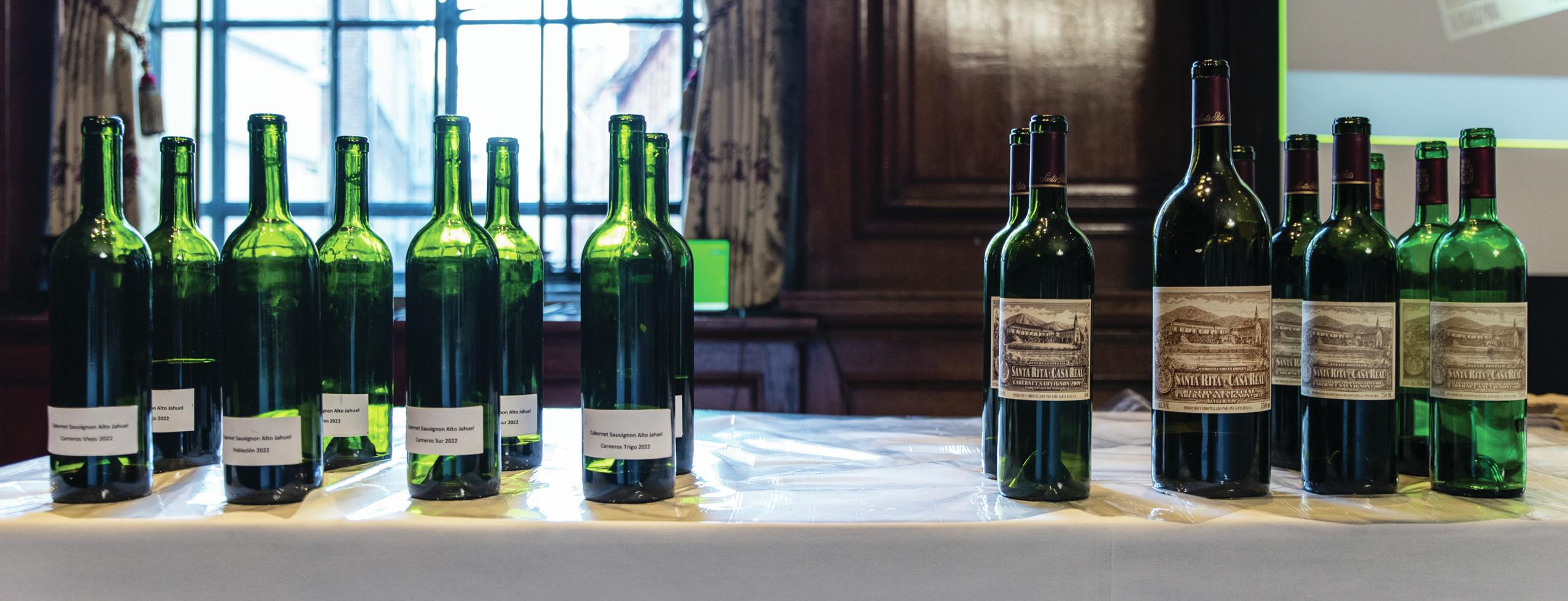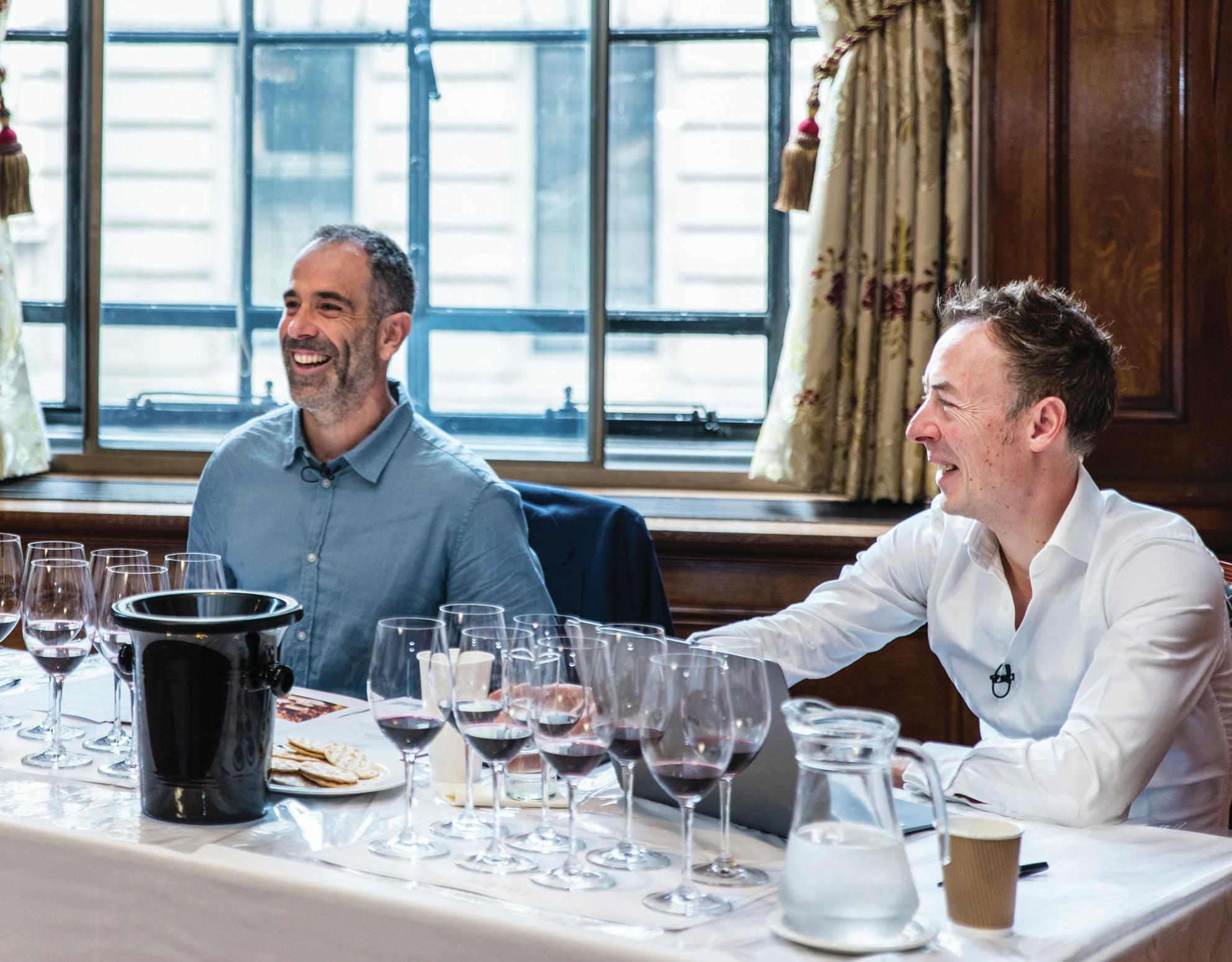This website uses cookies so that we can provide you with the best user experience possible. Cookie information is stored in your browser and performs functions such as recognising you when you return to our website and helping our team to understand which sections of the website you find most interesting and useful.
London masterclass celebrates 30 years of Chilean ‘wine legend’ Casa Real
With the release of its 2019 vintage, Chilean producer Viña Santa Rita shows that its fine wines are capable of being enjoyed when young, or kept for years to savour at a later date, as the UK trade discovered at a masterclass in London at the end of last year.

THE COMMERCIAL release of a collectible fine wine brand tends to give rise to celebration, but in the case of Casa Real’s 2019 vintage, there was particular cause for jubilation. This harvest was the 30th since the brand’s inaugural vintage: Casa Real launched with a wine from 1989.
For this reason the Chilean fine wine became the centre of the UK trade’s attention at a masterclass in London in November, giving attendees a chance to taste and learn about Casa Real as it launches a milestone vintage.
As I stated at the event, 30 years is an impressive track record for a top-end Chilean wine, with Casa Real being one of the first to launch into the ambitious arena of fine wine from South America.
For the brand, the tasting marked a pearl wedding anniversary for a marriage between Cabernet Sauvignon and a special terroir: Alto Jahuel in the foothills of the Andes, high up in the Maipo Valley.
Flying from Chile to talk to the UK trade about this unique partnership was star Chilean winemaker Sebastián Labbé – the person responsible for crafting Casa Real, along with the ultra-premium wines from its parent company, Viña Santa Rita.
I pointed out how Casa Real has emerged from hidden gem to greater fame in the world of fine Cabernets. Such a progression has been a result of sustained critical acclaim, repeated trade tastings, and, since the 2018 vintage, better global distribution, thanks to its listing on La Place de Bordeaux – meaning it’s now sold worldwide by French négociants alongside other icon wines every September.
Nevertheless, to retain awareness a wine must be constantly visible, and that means not only promoting its strengths through advertising, but convincing the trade that it tastes good too.

For a fine wine, such as Casa Real, this requires pouring samples to highlight your current style, but mature state too. So, at the 30-year anniversary masterclass, not only did Labbé show attendees Cabernets from different plots in the Casa Real vineyard from the 2022 harvest, but also a series of older vintages. This way, the UK trade was able to taste Casa Real’s components over space, as well as sample the complete wine over time.
For Labbé, making Casa Real, which he called a “wine legend”, is a privilege, and while he is keen to “preserve the magic” of the brand, he’s also excited about its future, having planted a new block of Cabernet in 2015 – a higher density vineyard plot with an east-west orientation (rather than north-south) that will yield a fine component for the blends of tomorrow.
For now, key to the character of Casa Real is a 20-hectare source vineyard with free-draining soils high up in the Alto Maipo sub-region of Alto Jahuel.
Located at the foothills of the Andes, this is an area with a huge diurnal temperature range, with warm days and very cold nights, as the mountain air descends into the valley below.
It’s also an area with very low relative humidity in summer, which slows sugar accumulation in the berries. The combination of little moisture in the air encourages a high level of transpiration in the vine, which in turn leads the plant to close its stomata to minimise water loss, slowing photosynthesis.
Summing up, the combination of dry conditions, and cool nights, “produces something particular in the ripening of the grapes”. Indeed, such conditions, “play to our advantage” in the Maipo Valley’s warming climate, said Labbé, because they produce a “small amount of unripe character that brings complexity, freshness and elegance”.

But there’s a further element to Casa Real that relates to the vineyard. It’s made entirely with a massale selection of piè franco Cabernet Sauvignon planted in the 1970s and ’80s. With four variants of Cabernet identified in the blocks used to make Casa Real, Labbé stressed that the wine has a high level of flavour complexity, despite using just one grape variety.
Importantly, this Cabernet Sauvignon is of exceptional quality. “It has small bunches, small berries, and thick skins, and the shoots are completely lignified at veraison, which leads to homogenous ripening: it is the ideal vineyard you might read about in books,” he said. But he did admit that it is extremely low-yielding.
TEMPERATURE STABILITY
As for the harvesting, this sees a hectare of the vineyard divided into eight blocks, then further broken up into 25 parcels, all of which are picked by hand during the day. After the grapes have cooled naturally overnight, fermentation starts in concrete vats.
“I like the temperature stability of fermentations in concrete,” said Labbé, noting that the process never becomes hotter than 26˚Celsius.
He prefers to gently extract the colour and tannin from the grapes, and performs the most aggressive management of the berries at the earliest stages of fermentation to avoid leaching any harsh characters from the grapes when the alcohol levels are elevated.
However, there is plenty of firm, if fine structure in Casa Real, which is a result of “good-quality press wine”, with 5%- 10% in the final blend “to build backbone”, said Labbé, stressing that such an approach hails from the earliest days of making the wine, and the influence of consultants from Bordeaux – the brand has always worked with Boissenots (the late Jacques, and now his son, Eric).
The final blend is then aged in 225-litre French oak barrels, using around 80% new staves, with a medium toast, for 18- 20 months.
The current release of Casa Real is “approachable”, even in its youthful state, said Labbé, noting its “lively red fruit, along with cassis and blueberries”, as well as “roundness and creaminess to the tannins”, and “precision” on the finish.
“I have no doubt it has the concentration and structure to age very well, but you could buy it now and drink it tonight,” he said.
On the other hand, having also shown what Casa Real tastes like after almost 30 years of ageing, it was clear that this wine may be appealing when young, but it’s sublime when old.
This ensures that Casa Real is ripe for the critic who wants to assess it now, and the wine collector who’ll want to sample it in the years to come.
About the event
- In celebration of the release of the 2019 vintage through La Place de Bordeaux – Casa Real’s 30th bottling since the inaugural 1989 harvest – Sebastián Labbé, Casa Real´s winemaker, hosted a masterclass in London, on Tuesday 8 November. The event explored the nature of Casa Real by considering its key components over space as well as its characteristics over time – with its ageing potential tested through a mini vertical tasting.
- The wines tasted included: Casa Real Reserva Especial 2019 Casa Real Reserva Especial 2012 Casa Real Reserva Especial 2002 Casa Real Reserva Especial 1995
- The component wines, which were barrel samples, included: Carneros viejo 2022 – planted in 1971 Población 2022 – planted in 1980 Carneros Sur 2022 – planted in 2015 Carneros Trigo 2022 – planted in 2015
Casa Real Reserva Especial Cabernet Sauvignon, 2019
- Region: Alto Jahuel, Maipo Andes
- Grape variety: Cabernet Sauvignon
- ABV: 14.5%
- As one would expect of Casa Real, made using Cabernet Sauvignon from an almost 60-year-old vineyard in Alto Jahuel, one of the highest parts of the Maipo Valley, this is a wine of intensity and freshness. Benefiting from the free-draining soils of an ancient alluvial terrace of the Maipo River and the cool night-time air from the Andean mountains above, there is a power and purity to Casa Real, traits that ensure an instant fruity appeal is married to a taut structure and a precise finish – qualities that make Casa Real particularly well suited to long ageing after release. Indeed, Casa Real has a track record of older vintages going back to 1989 that are still tasting wonderfully today. 95 points.

